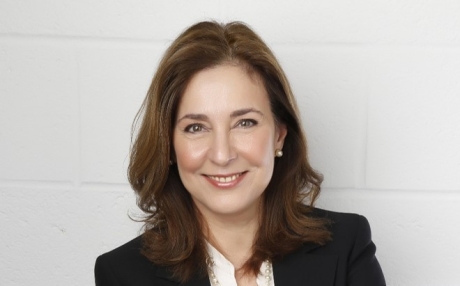
The allure of venture capital is undeniable as the hope of finding a ‘unicorn’ that goes on to a public offering maintains global interest, despite the risks involved. But there is a way to minimise the risks, argues Michael Joseph co-founder and co-chief executive officer of Ion Pacific.
The allure of venture capital is undeniable – the hope everlasting of finding a unicorn that goes on to a jackpot IPO fueled venture capital assets under management to swell to $940 billion by Q2 last year.
And yet many investors are also acutely aware of the risks of investing in venture capital; committing money for many years to unproven companies that can just as easily go bust as they can go boom.
What if there was a way to minimise these risks? I think there is.
The key is a mature and efficient venture capital secondary market.
Historically focused on private equity, investors in the traditional limited partners secondary market typically buy existing limited partner interests in a fund, as opposed to investors in the primary market, who put money directly into newly-formed funds.
Derisking investments
For a shrewd investor, the secondaries market is a chance to de-risk their investments.
When investors put their money directly into a new fund, they are putting their trust in the fund manager and the manager’s ability to identify winners.
Investors in the secondary market, however, have much more visibility into the underlying assets of the fund, which has been up and running for several years at their point of entry.
They still need to have faith in the fund manager, but they are also armed with invaluable information about the companies underpinning the fund, including financials, market traction, market growth and the capabilities of management teams of these companies.
They also have the benefit of having the fund’s own performance data available. Combined with the fact that secondaries investors come into the investment further along on the almighty J-curve, the advantages of secondaries investing are clear.
Another great advantage of secondary investment is what I call its “velocity of cash flow”.
Because the investor is coming in later in a fund’s term, the investor has less time to wait before money is returned, and consequently, the investor’s multiple on invested capital at the time of exit would usually be lower than a primary investor’s in that same fund.
Moreover, because the investor was invested in the fund for a shorter period, his internal rate of return (IRR) will be higher than that of the primary investors.
And perhaps most importantly, the investor took far less risk. As the close of the longest bull market in history impends, investors should be ever more conscious of optimising their risk-adjusted returns.
Investors understand this and are continuing to turn to the secondaries market, attracted by the risk-adjusted returns and the velocity of cash flow.
A growing market
The private equity secondary market has seen unprecedented growth in recent years.
Since 2013, annual transaction volume in the secondaries market has grown at a CAGR of around 40% to approximately $75 billion last year.
As of June 2019, there were 51 secondaries vehicles on the market, seeking a combined $77 billion in capital, compared to 28 funds seeking $27 billion five years ago.
This year, the largest private equity secondaries fund being raised has a target of $18 billion, the sixth-largest fund of its kind; fifteen years ago, the largest fund dedicated to secondaries was just $2 billion.
The focus across these funds has been the private equity market, an underlying asset class whose steady accretion has created a fertile ground for secondary growth. I believe there is now an immense opportunity to replicate the success of private equity secondary funds in the venture capital market.
Over the past nine years, assets under management at venture capital funds have swelled more than three-fold, fueled by investments from a diverse group, including large corporations, family offices and angel investors, among others.
At the same time, the average period for a startup company to reach a liquidity event has increased to 11 years.
At Ion Pacific, we know these dynamics (exponential growth in money flowing into the venture capital ecosystem combined with longer holding periods for money to be returned) are creating an unprecedented need for liquidity, laying a foundation for a robust and dynamic venture capital secondary market.
Limited partners needing liquidity sooner than expected or simply seeking to rebalance their portfolio should look to the venture capital secondary market.
Venture capital GPs, too, who are increasingly facing liquidity needs should look to the venture capital secondary market to help facilitate earlier distributions to their investors.
All signs point to the need for a robust venture capital secondary market and yet, beyond a handful of funds in the US and UK, there aren’t many players addressing this vast market.
We at Ion Pacific are leading the march in Asia, home to a thriving startup scene and where the venture capital secondary market is almost entirely untapped.
We started one of the first venture capital secondary funds in the region with our 2015 fund and followed that up with our 2018 fund, building a formidable network of GPs, tech companies and corporate venture capital companies in key Asian markets – as well as the unique diligence, legal, accounting and deal structuring expertise needed for this category.
In the coming years, this nexus of innovation and attractive risk-reward ratios, in the world’s fastest growing economic region, is going to be one of the most interesting places to be.
* Michael Joseph (pictured) is the co-founder and co-chief executive officer of Ion Pacific, an innovation-driven investment house that provides creative and flexible capital to talented entrepreneurs, dynamic companies and like-minded members of the technology investment community. Before founding Ion Pacific, he was a managing director and founding co-head of investment and merchant banking at Reorient Group, the Hong Kong-listed financial institution that was sold to Jack Ma (Ali Baba) and associated entities in 2015.







